Developing essential fish habitat maps: report
The project helped define areas of the sea essential to fish for spawning, breeding, feeding, or growth to maturity. Twenty-nine species and multiple life-stages were reviewed covering marine fish and shellfish of commercial and ecological importance, relevant to offshore wind development areas.
This document is part of a collection
Appendix A. Project methodological protocol (diagrams)
The methodological process undertaken in this project to develop the resulting EFH spatial outputs is summarised as a series of interrelated diagrams (flow charts).
The following diagrams are included (the relevant section of the report and technical annexes are indicated in parenthesis):
For the EFH spatial outputs from data-based modelling:
- a) EFH models: Model calibration (report sections 2.2.1 to 2.2.3; Annex 2);
- b) EFH models: Model application (report section 2.2.4; Annex 2);
- c) EFH models: Confidence assessment (overall) (report section 2.2.5; Annex 3);
- d) EFH models: Confidence assessment (spatial) (report section 2.2.5; Annex 3);
- e) EFH models: Spatial output (survey data and model lines of evidence) (report section 3.1);
- f) EFH models: Spatial output (map validation survey line of evidence) (report section 3.1);
- g) EFH models: Spatial output (lines of evidence combined) (report section 3.1). For the spatial outputs from the habitat proxy assessment:
- h) Habitat proxies: Assessment and mapping (report section 2.3);
- i) Habitat proxies: Spatial output (report section 3.1).
A legend of the symbols used in the diagrams is given below. In addition, dashed lines in a diagram indicate flows of data/information from/into another main process (represented in a separate diagram). Bold lines and text indicate the main output of the process represented in a diagram. Y indicates data on fish/shellfish aggregations. X indicates persistent environmental variables (e.g. Depth), whereas Xt indicates non-persistent environmental variables (e.g. SST).

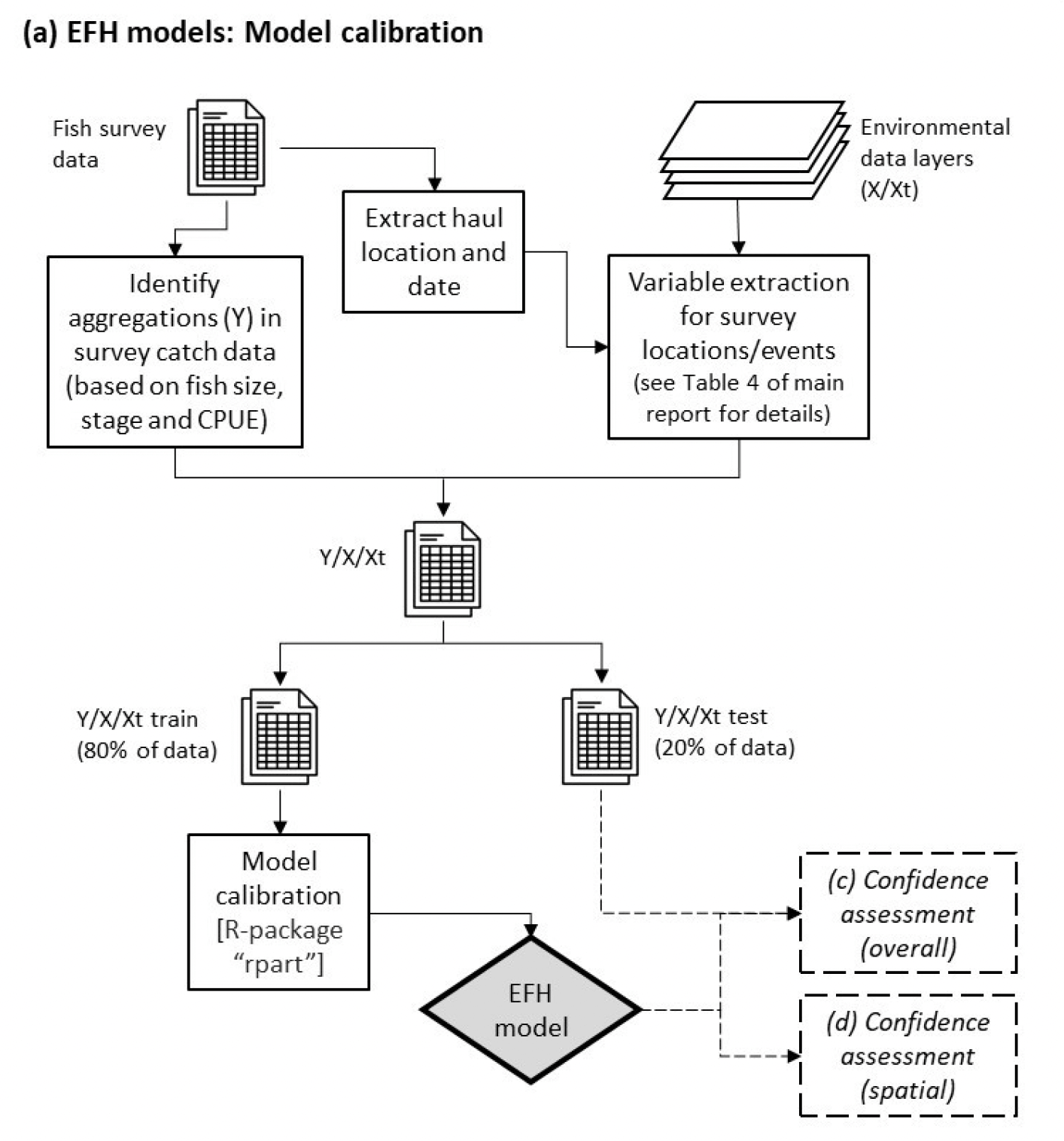
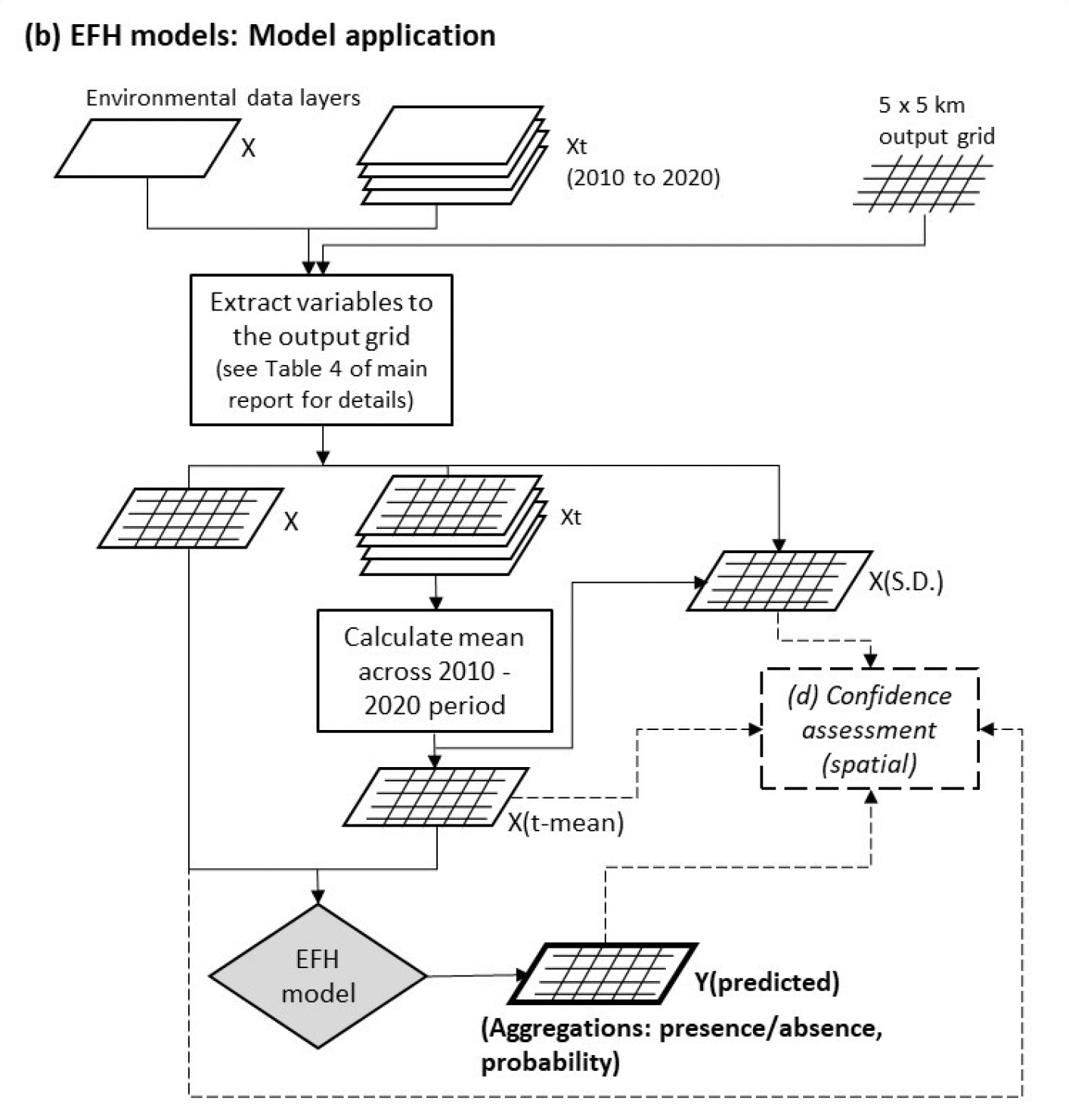
Footnote: Standard deviation (S.D.) is also derived from the gridding process to obtain the coefficient of variation (CV) that contributes to the spatial confidence assessment.
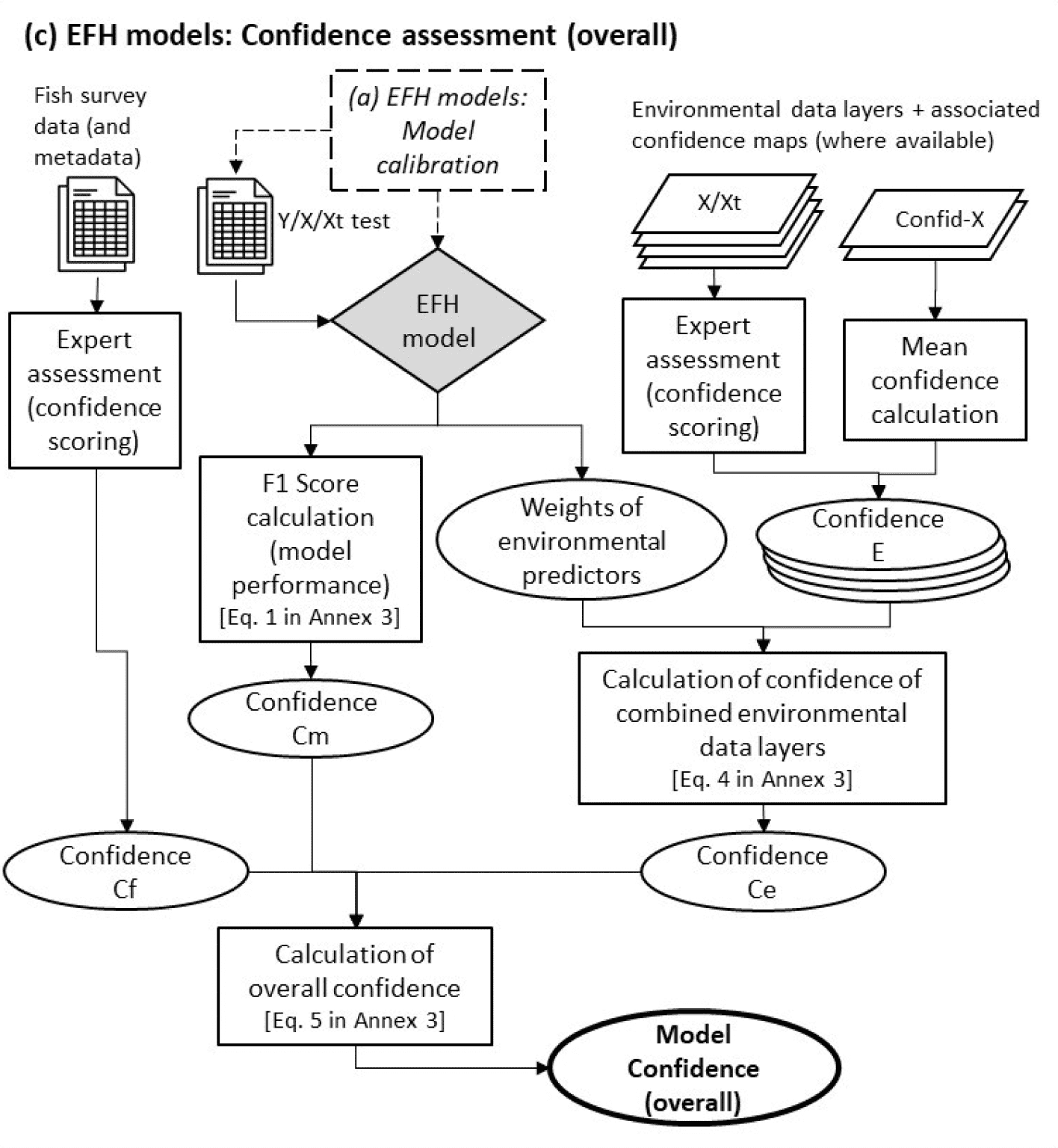
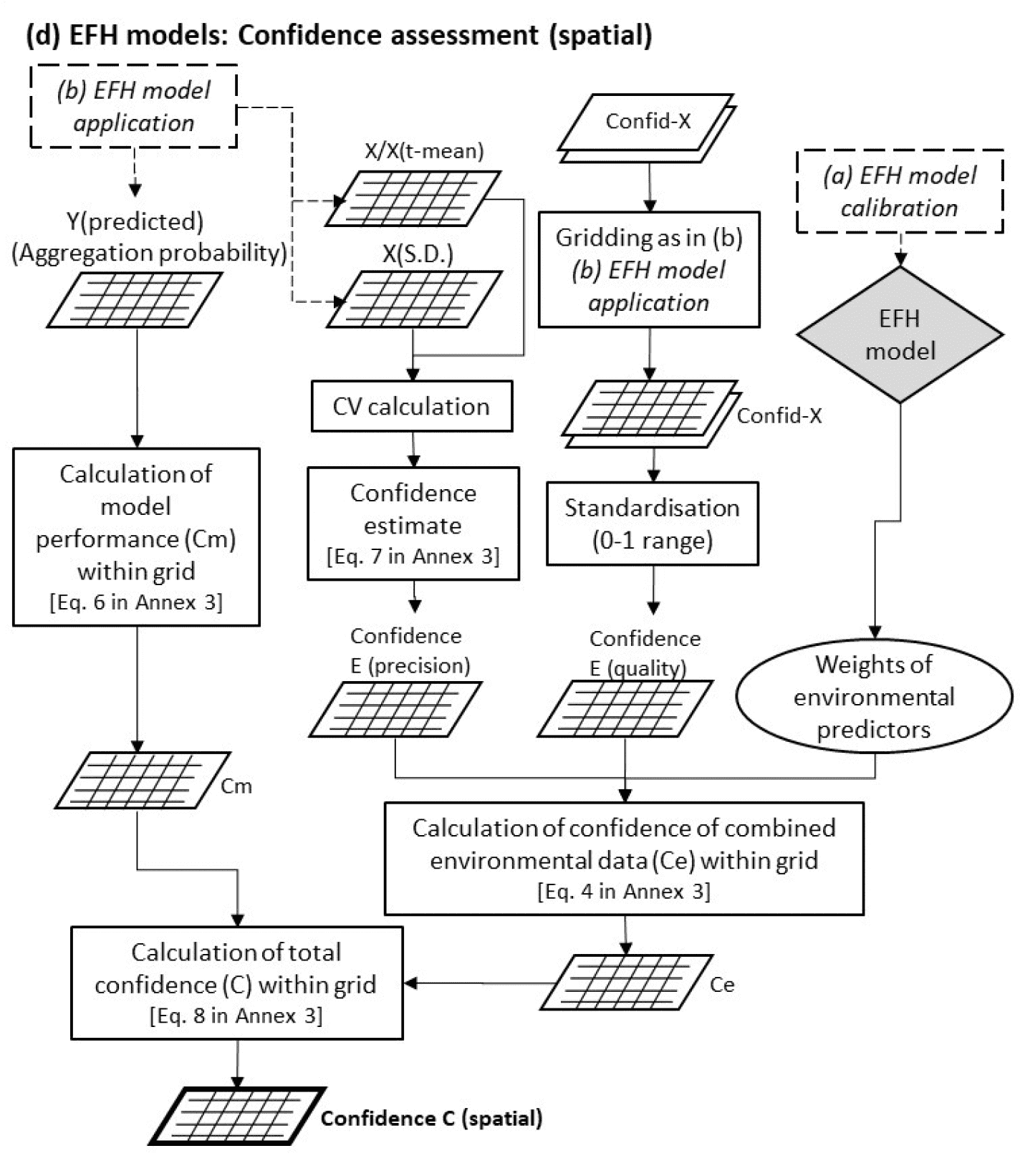
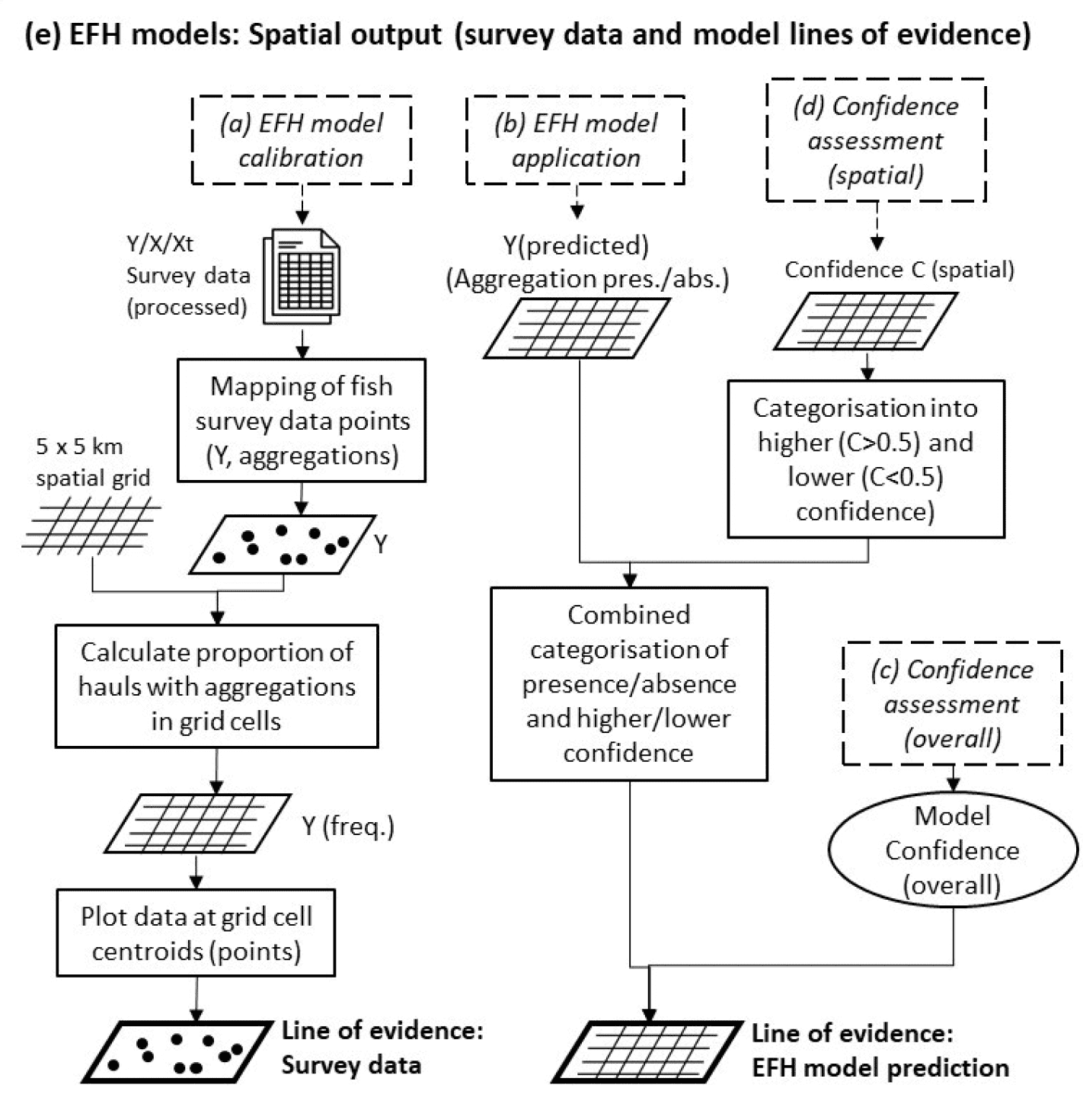
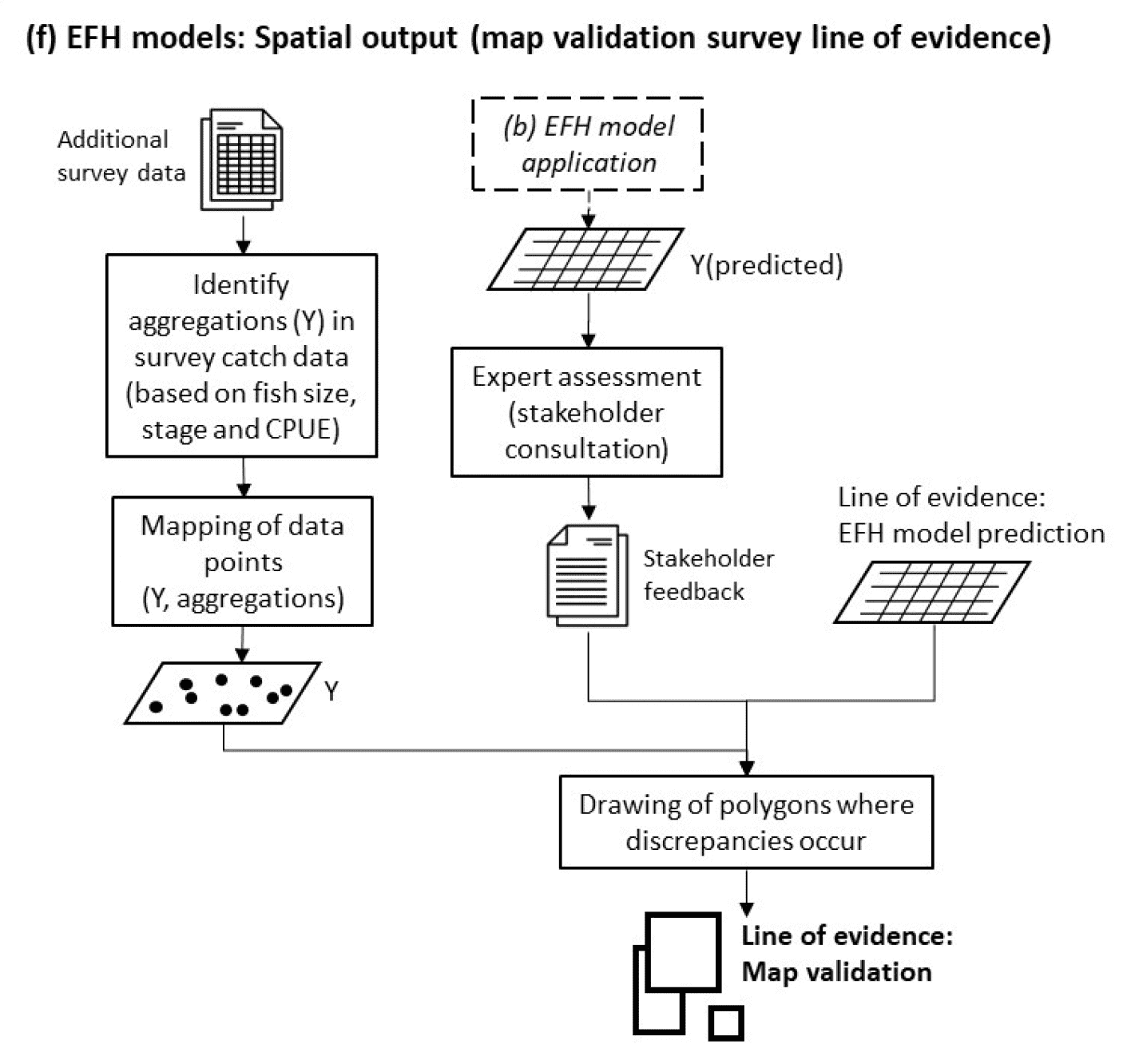
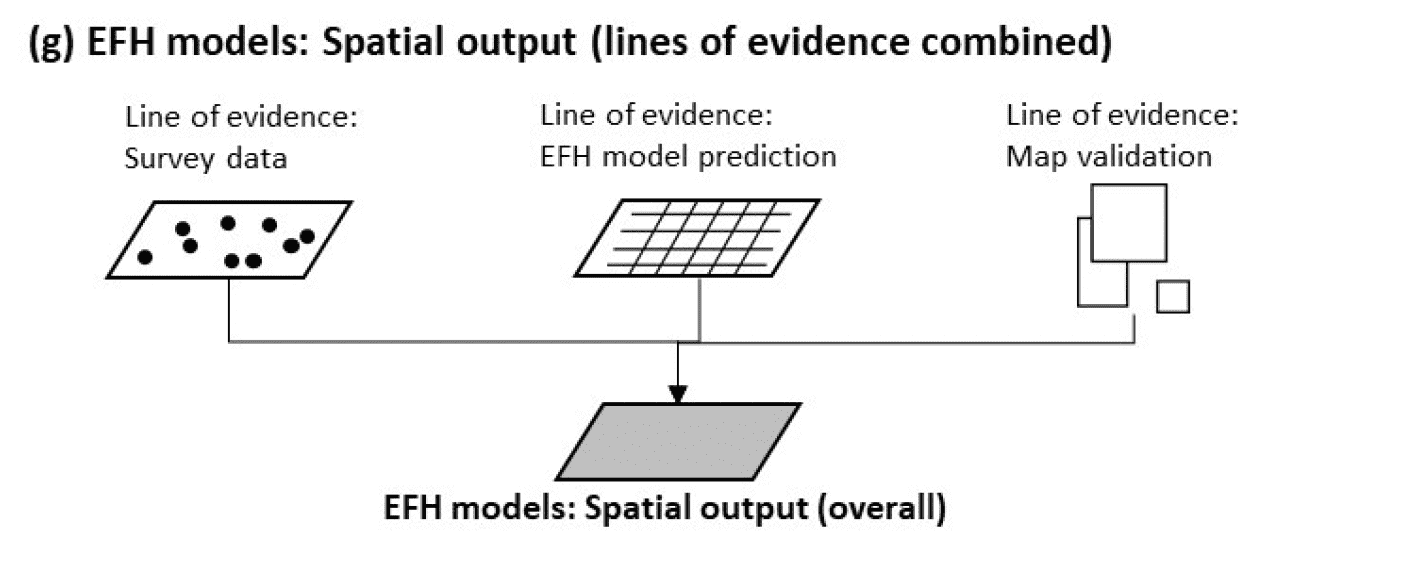
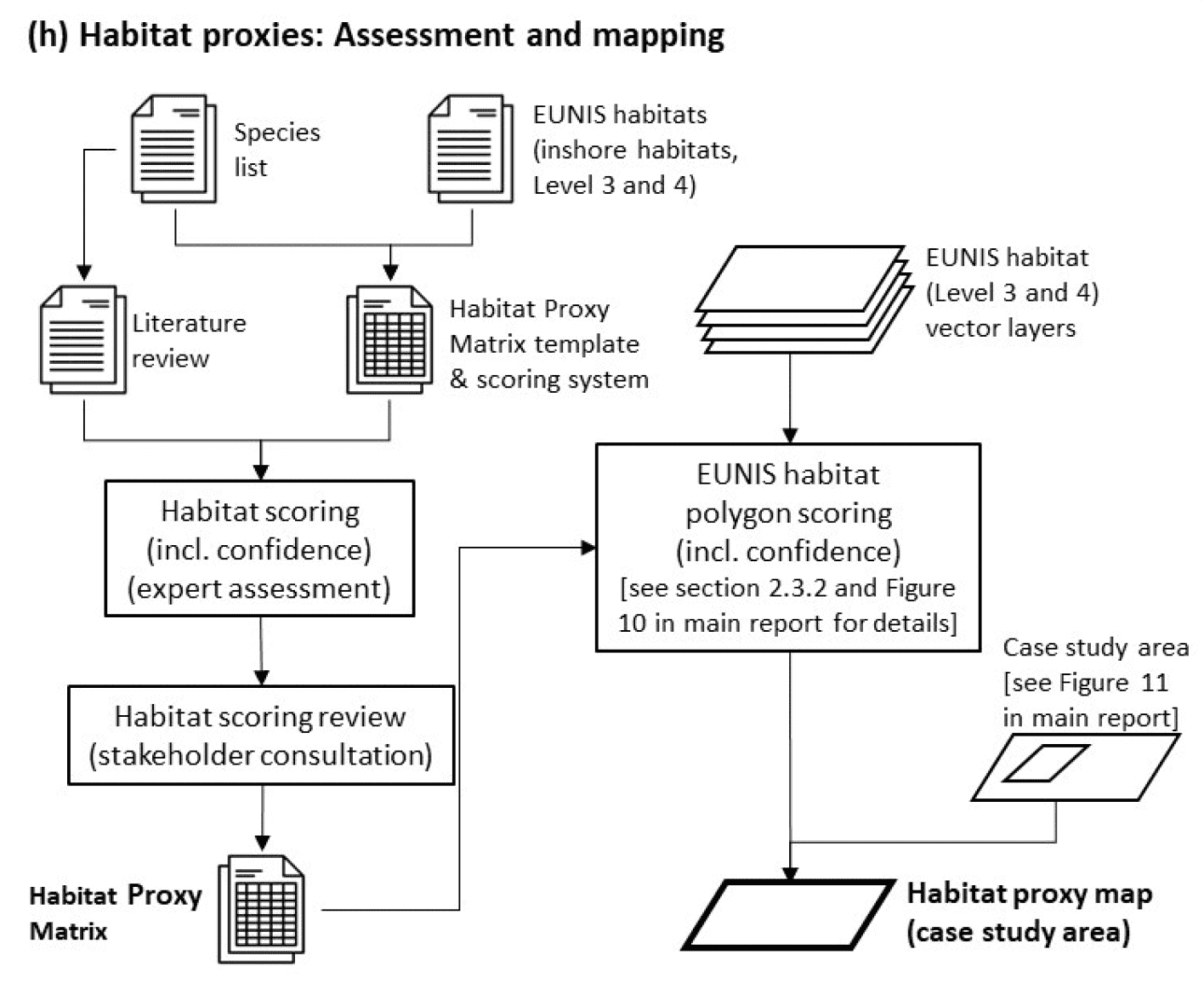
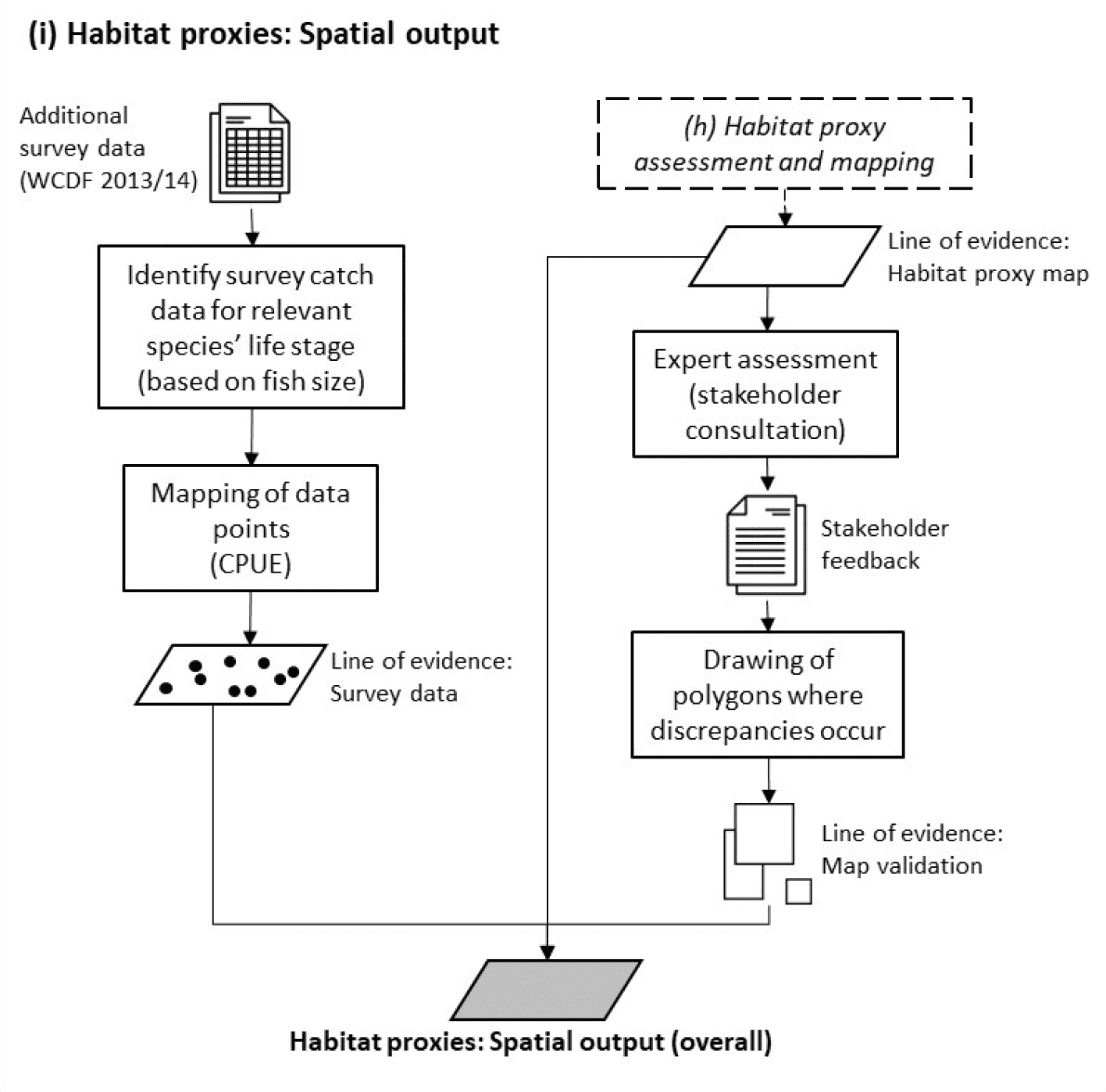
Contact
Email: ScotMER@gov.scot
There is a problem
Thanks for your feedback